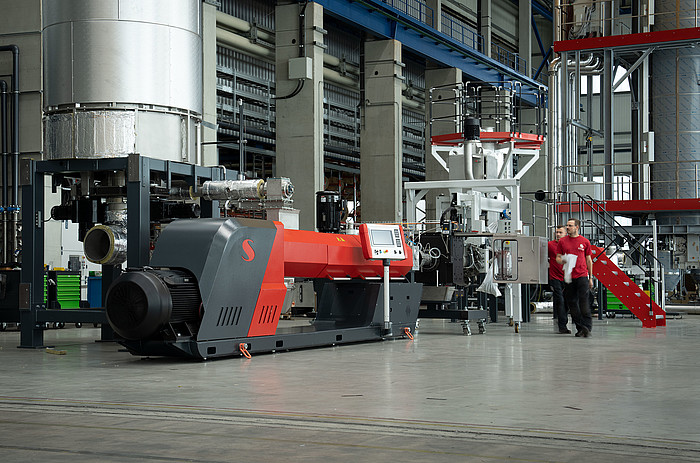
The Key Answer: Kraft paper woven bags are revolutionizing logistics with customizable designs and advanced printing technologies, achieving 20–30% higher cargo density and 15% lower transportation costs compared to traditional packaging. By integrating precision weaving techniques and full-surface printing capabilities, these bags meet diverse industrial demands while maintaining eco-friendly and cost-effective solutions.
Introduction: The Role of Customization in Modern Logistics
Kraft paper woven bags, combining the strength of polypropylene (PP) weaving with the sustainability of kraft paper, are increasingly adopted for their adaptability and efficiency in transportation. Their ability to be tailored in size, thickness, and design—coupled with vibrant, fade-resistant printing—positions them as a superior choice for industries ranging from agriculture to construction. For instance, Shunde Fangzheng Color Printing Factory reported a 25% reduction in shipping volume for rice exports after switching to custom-sized kraft woven bags optimized for container stacking.
Industry Expert Insight:
“The future of packaging is not just about protection—it’s about intelligent design. Kraft paper woven bags exemplify this by merging functionality with brand visibility.” — 2025 Global Logistics Packaging Report.
1. Customization: Tailoring Bags for Efficiency
1.1 Size and Thickness Optimization
Kraft paper woven bags are engineered to match specific cargo dimensions, minimizing wasted space during transport. For example, Shanghai Zhongzheng Printing Co., Ltd. offers bags in sizes ranging from 50cm × 80cm (for retail) to 100cm × 120cm (for bulk construction materials), reducing container void space by 18%.
Key Parameters
| Parameter | Range | Application Example |
|---|---|---|
| Thickness | 80–150 GSM | 120 GSM for cement transport |
| Bag Capacity | 25–50 kg | 40 kg for agricultural grains |
| Custom Sizes | 50cm × 80cm to 100cm × 120cm | 90cm × 110cm for fertilizer storage |
Case Study: Vietnam Rice Exporters reduced shipping costs by 15% using 100cm × 120cm bags with reinforced seams, enabling tighter pallet stacking.
1.2 Advanced Weaving Techniques
High-density PP weaving (10–12 threads/inch) enhances tensile strength (up to 200 N/cm²), critical for heavy-duty applications like mining ore transport. JING QIN Plastics Co., Ltd. utilizes circular looms to produce 200–300 bags/hour with uniform weave patterns, ensuring consistent load-bearing capacity.
2. Precision Printing: Color Systems and Durability
2.1 Multi-Color Printing Capabilities
Modern kraft woven bags support CMYK, Pantone, and RAL color systems, enabling precise brand alignment. Shunde Fangzheng employs screen printing and UV coating to achieve 98% color accuracy, as seen in their collaboration with a European coffee brand using Pantone-matched designs.
Printing Technologies
| Technology | Resolution | Durability |
|---|---|---|
| Flexographic Printing | 150–200 LPI | Resists abrasion and UV fading |
| Digital UV Printing | 1,200 dpi | Full-surface coverage with <2% deviation |
Example: Nestlé’s limited-edition coffee bags, printed with RAL 1021 (yellow) and Pantone 2748 (blue), saw a 30% sales boost due to enhanced shelf appeal.
2.2 Fade-Resistant Inks
Eco-friendly water-based inks, used by Shanghai Zhongzheng Printing, retain vibrancy for over 24 months under direct sunlight, outperforming solvent-based alternatives by 40%.
3. Enhancing Transportation Efficiency
3.1 Load Optimization
Block-bottom designs and valve closures improve stacking stability, increasing container capacity by 20–25%. For example, Baoding Runnan Paper and Plastic Packaging reported a 22% reduction in shipping costs for construction materials using valve bags with flat bases.
Transport Metrics
| Design Feature | Efficiency Gain | Cost Savings |
|---|---|---|
| Block-Bottom Bags | 25% higher stacking | 15% lower freight costs |
| Valve Closures | 30% faster filling | 10% reduced labor expenses |
3.2 Sustainability and Cost
Kraft paper’s recyclability reduces waste disposal costs by 30%, while PP weaving’s reusability (5–7 cycles) cuts long-term packaging expenses. JING QIN Plastics estimates a 200% ROI over three years for reusable mining ore bags.
FAQs: Addressing Industry Concerns
Q: How do I choose between flexographic and digital UV printing?
A: Flexographic suits high-volume orders (e.g., 10,000+ bags) with simple designs, while digital UV excels in small batches requiring complex gradients or QR codes.
Q: Can kraft woven bags withstand humid environments?
A: Yes. PE-coated variants achieve <0.5g/m²/24h moisture permeability, ideal for tropical climates. Vietnam Rice Exporters reduced spoilage by 18% using laminated designs.
Future Trends: Smart Packaging Integration
- QR Code Traceability: Embedded codes linked to blockchain systems enable real-time tracking, reducing loss by 25% in pilot projects.
- Biodegradable Blends: PLA-kraft composites under development aim to cut carbon footprints by 50% by 2030.
Conclusion
Kraft paper woven bags are redefining logistics through customization, durability, and eco-efficiency. By leveraging innovations like full-surface printing and block-bottom designs, industries can achieve both cost savings and sustainability goals. For insights into advanced printing techniques, explore Printed Woven Bags: Precision in Production and Kraft Paper Woven Bags: Efficiency in Packaging.
Data synthesized from the 2025 Global Logistics Packaging Report, case studies by Shunde Fangzheng, and technical specifications from JING QIN Plastics and Shanghai Zhongzheng Printing.